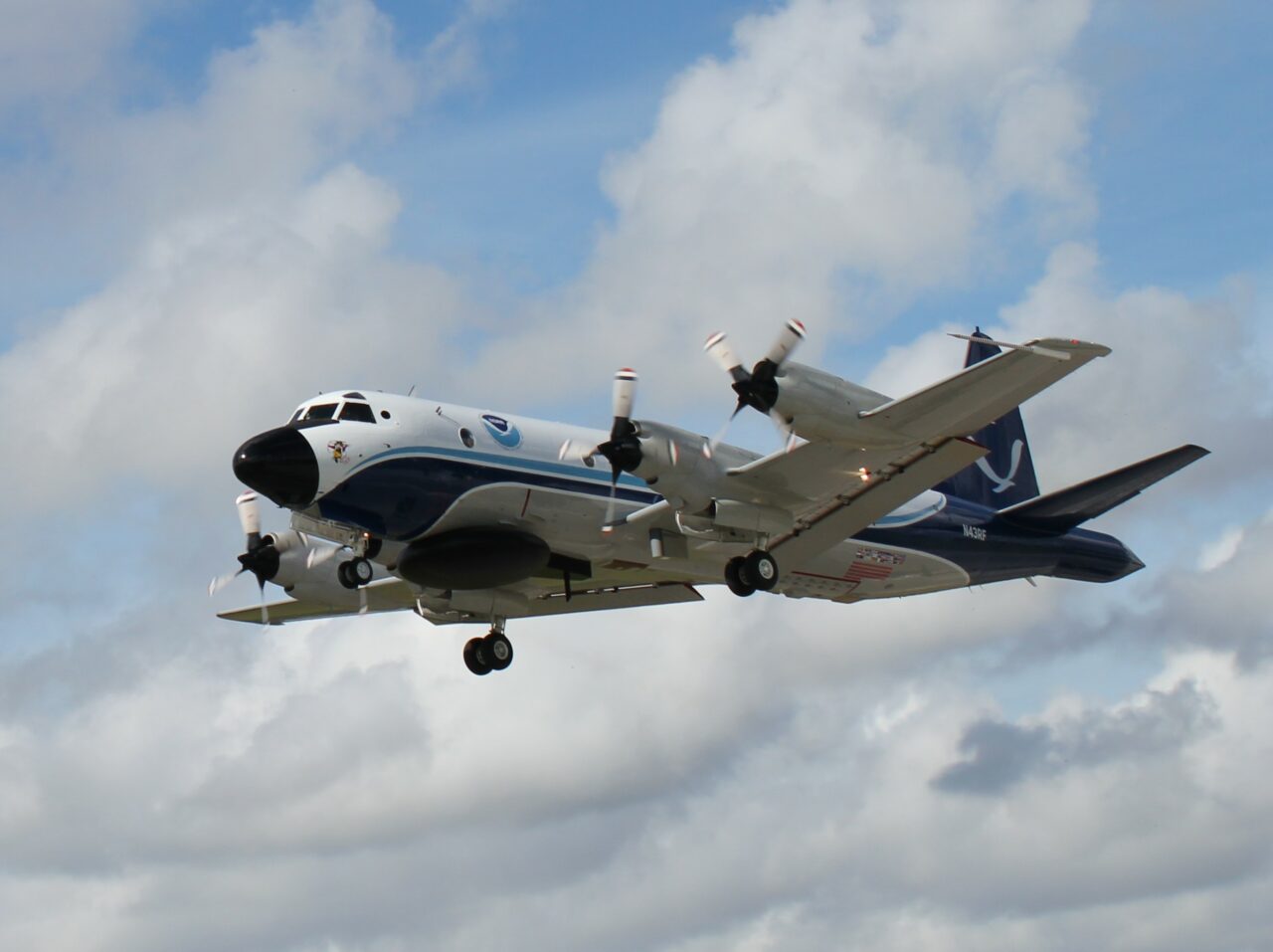
Federal hurricane trackers were short on planes as two major storms moved through the Atlantic region. A Hurricane Hunter aircraft affectionately nicknamed “Miss Piggy” gathered data on two storms, but broke down the day Hurricane Idalia made landfall
That means the final data published as Big Bend communities braced for impact came from Air Force Reserve aircraft instead.
Officials with the National Oceanic and Atmospheric Administration (NOAA) confirmed to Florida Politics only one of the Hurricane Hunter aircraft normally deployed for storms was operational as the agency tracked multiple tropical systems.
The equipment shortages and failures were first reported by The Washington Post.
Jonathan Shannon, a spokesperson for NOAA’s Office of Marine and Aviation Operations, confirmed two of the Hurricane Hunter WP-3D Orion planes were grounded on Aug. 30, Wednesday morning, as Hurricane Idalia intensified.
U.S. Sen. Rick Scott said the fact NOAA had no planes flying as the storm bore down on Florida was unacceptable.
“This is UNACCEPTABLE and even more infuriating knowing that (President Joe) Biden’s budget included no funding for these planes,” Scott posted on X.
“I’ve already spoken to (Air Force Secretary) Frank Kendall to demand answers and will be pushing for immediate action from the Biden administration so this NEVER HAPPENS AGAIN.”
One aircraft, designated N42RF and nicknamed “Kermit,” has been in repairs as mechanics address a fuel leak as Idalia moved through the Gulf of Mexico. The plane will stay out of commission until next week.
Shannon said another aircraft, a Gulfstream IV-SP high-altitude jet nicknamed “Gonzo,” flew in the region until Monday and had to go into maintenance for a flight control issue.
The only other Hurricane Hunter aircraft in NOAA’s fleet in the meantime pulled major duties. Miss Piggy, designated as N43RF, flew 11 of the 12 days before Idalia made landfall. During that time, it tracked both Idalia and Hurricane Franklin, a major hurricane that impacted Bermuda and remains active in the Atlantic.
But mechanical issues sidelined Miss Piggy the morning Idalia was on track to make landfall.
“The aircraft has been repaired and is also expected to return to service by next week,” Shannon wrote in an email to Florida Politics.
He confirmed the Air Force Reserve stepped in to provide additional assistance on in-flight collection of data critical for modeling the course of hurricanes.
Shannon stressed the planes only provide one set of data meteorologists use in tracking weather.
“In addition to gathering data from the NOAA Hurricane Hunter aircraft, satellites and weather buoys, NOAA has numerous observing platforms on and in the ocean this season,” Shannon wrote.
“Data were also collected in Idalia by one Saildrone, two ocean gliders and multiple Argo floats. These near-real time data are shared with researchers for awareness. This season, NOAA is also operating its new Hurricane Analysis and Forecast System model as well as the Hurricane Weather Research and Forecasting model. Early reports show the new model is performing well.”
In the case of Hurricane Idalia, forecasts held true for days before landfall, with National Hurricane Center models showing a tropical depression would reach hurricane strength as it passed Cuba, strengthen into a major Category 4 hurricane as it headed north, and ultimately retaining Category 3 strength as it made landfall in the Big Bend.
But previous hurricanes have seen late shifts in forecasts as pressure systems and other weather elements impact atmospheric conditions. In many cases, the changes in behavior by the storm are detected and tracked only by the aircraft the federal government flies into systems.
The final advisories released before the storm made landfall, meanwhile, measured maximum sustained wind speeds based on radar instead of Hurricane Hunter planes.




4 comments
My Take
August 31, 2023 at 10:31 pm
Speaking about–and as–a giant spewing of hot air, Sen. Scott . . . .
My Take
September 1, 2023 at 12:17 am
I wonder why the use of turboprop engines over turbojet (though these may be simply too wide) or straight jet engines?
Carl Newman
September 1, 2023 at 10:33 am
Turboprops re route the water entering the engines so that there is less likelihood of putting the “flame” out. Makes it safer for the crew. A turbofan has the water enter the front and traverse straight through the “Hot section” and has, at times, caused flame out in severe instances. Also, the turboprop provides instantaneous power with zero “spool up” times because the turbines are constantly spinning at 100 percent and a simple blade angle change on the prop provides instant power.
My Take
September 1, 2023 at 8:21 pm
Thanks
I had guessed at some of that, but not at all the spool-up part (even though, now that I think of it, it is basically the same as the main rotor on a helicopter).
Comments are closed.